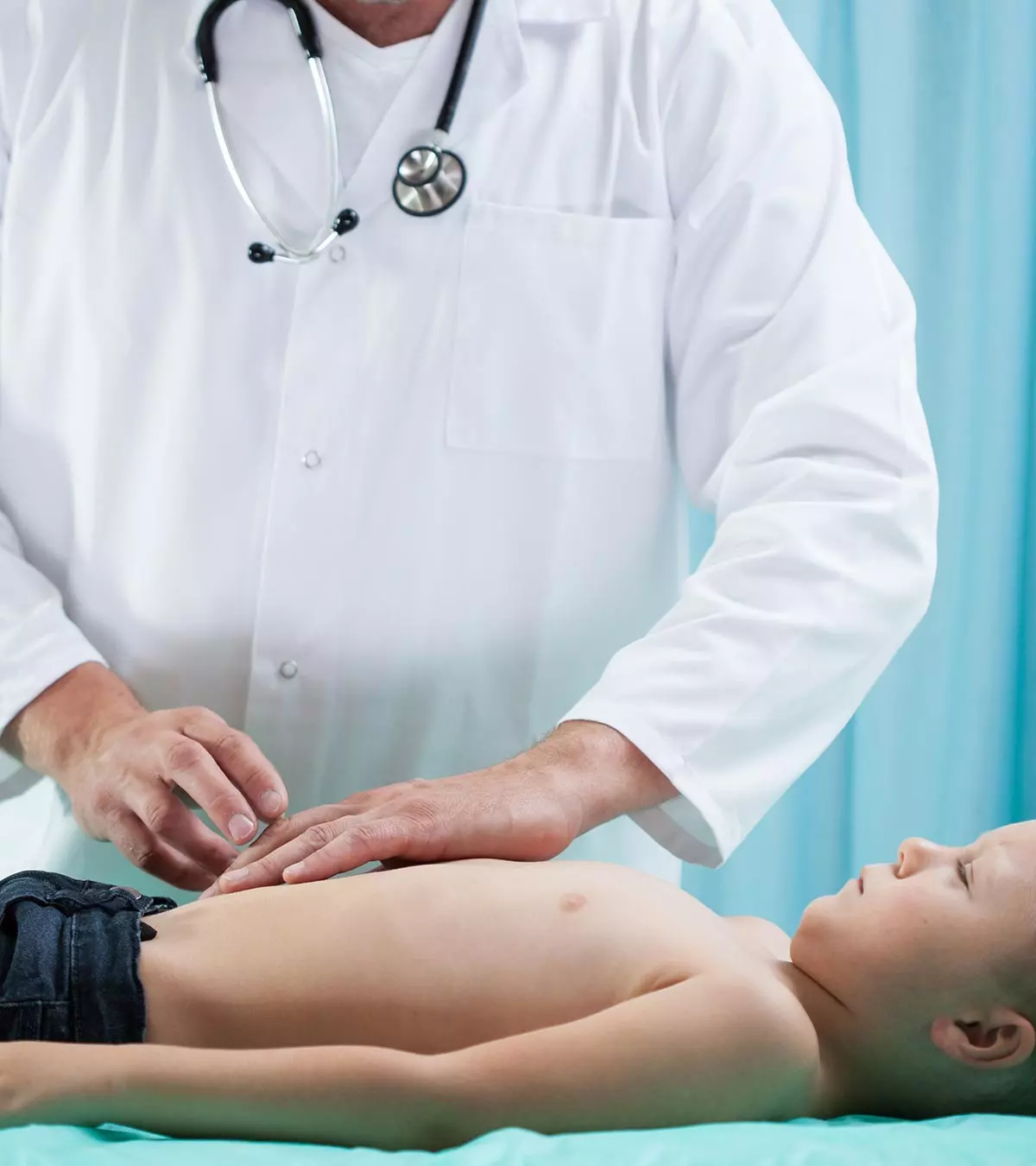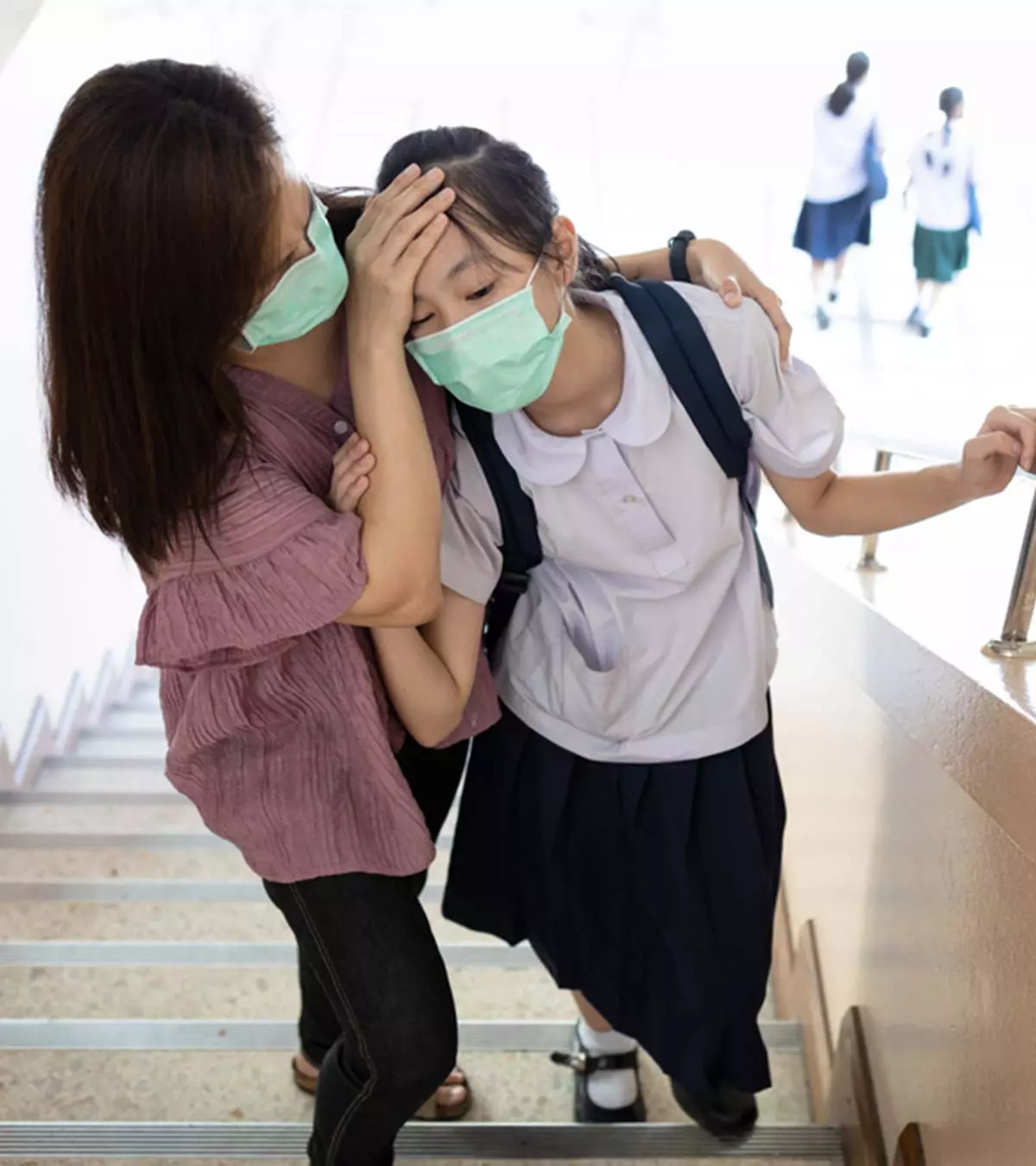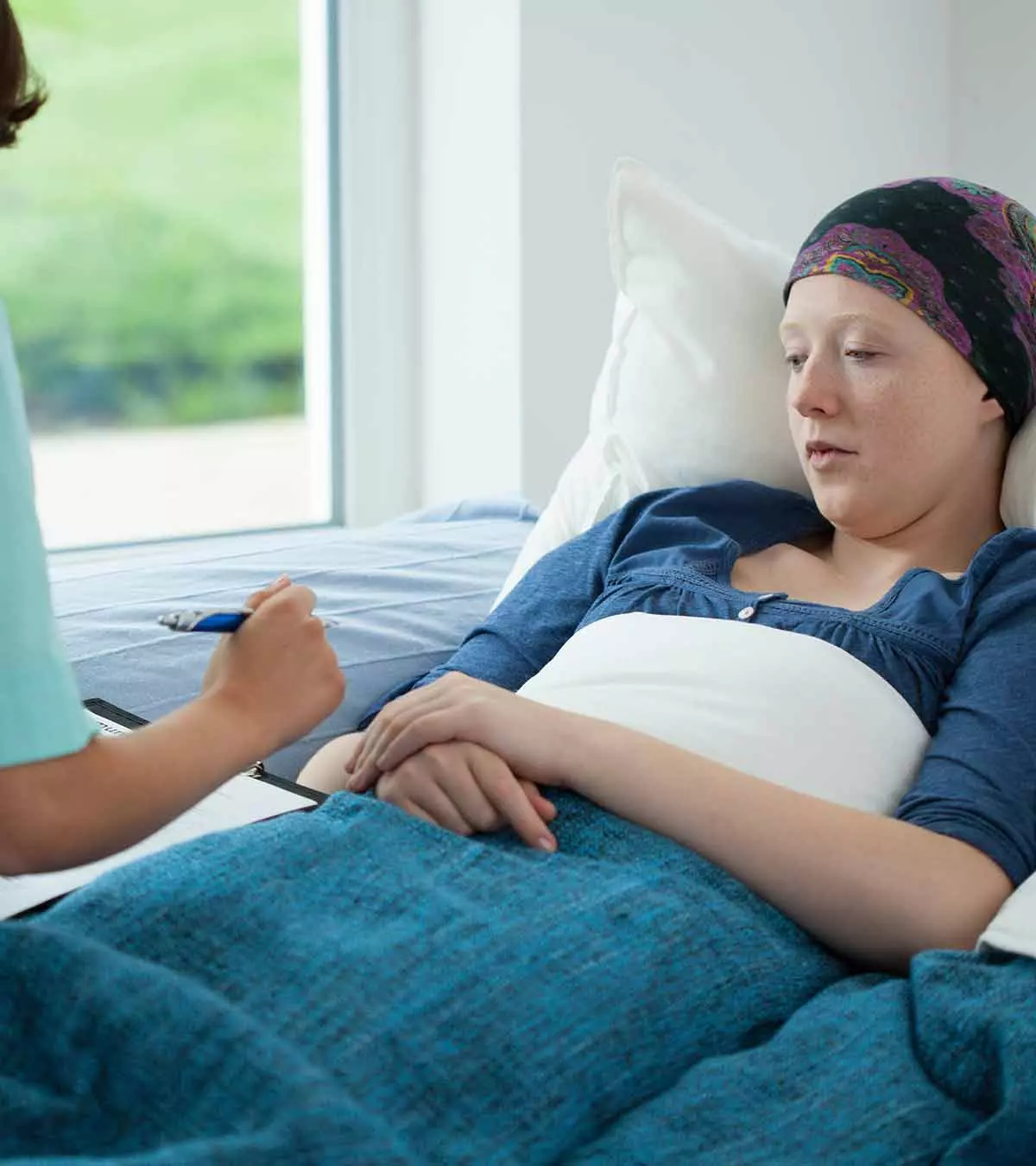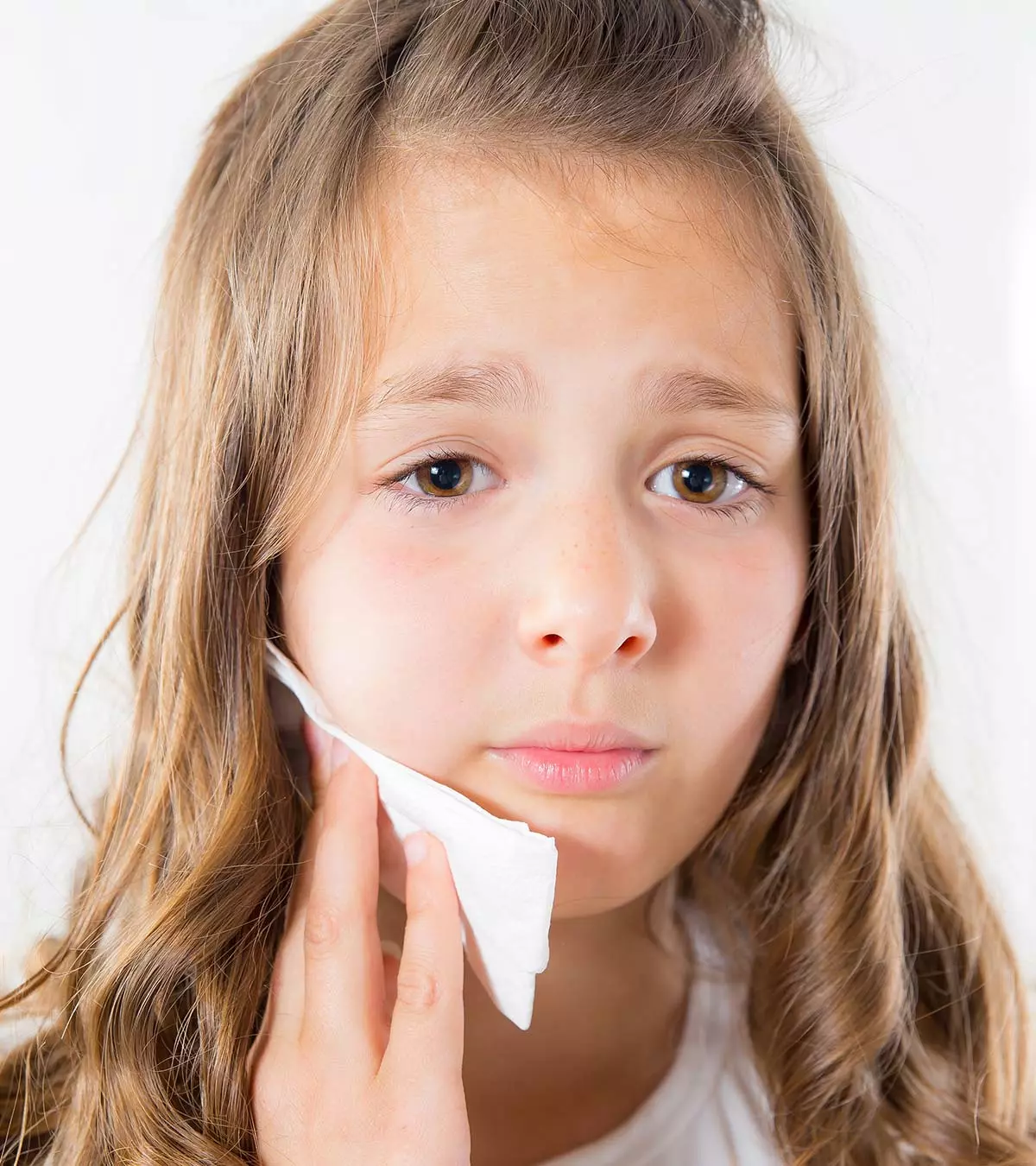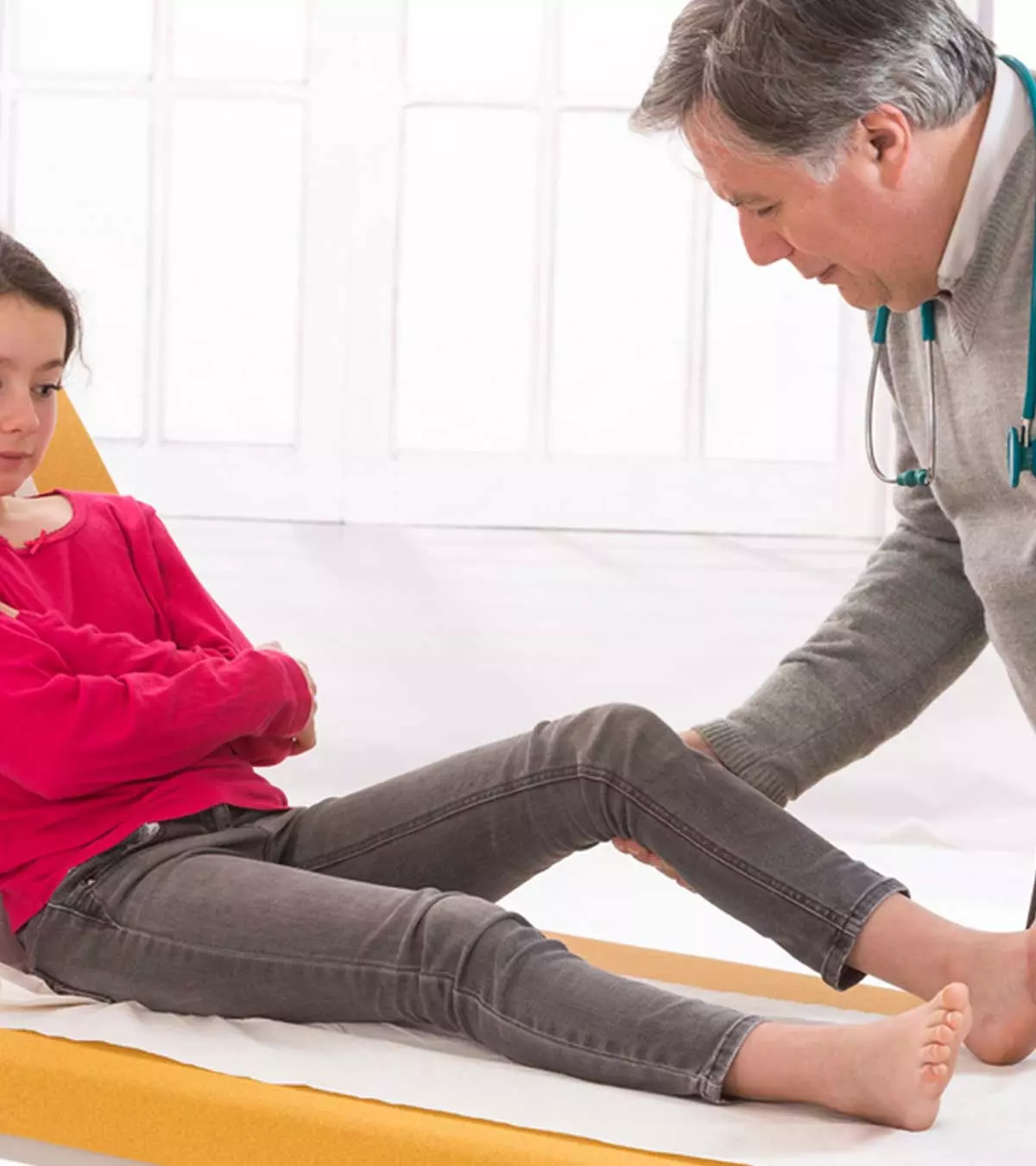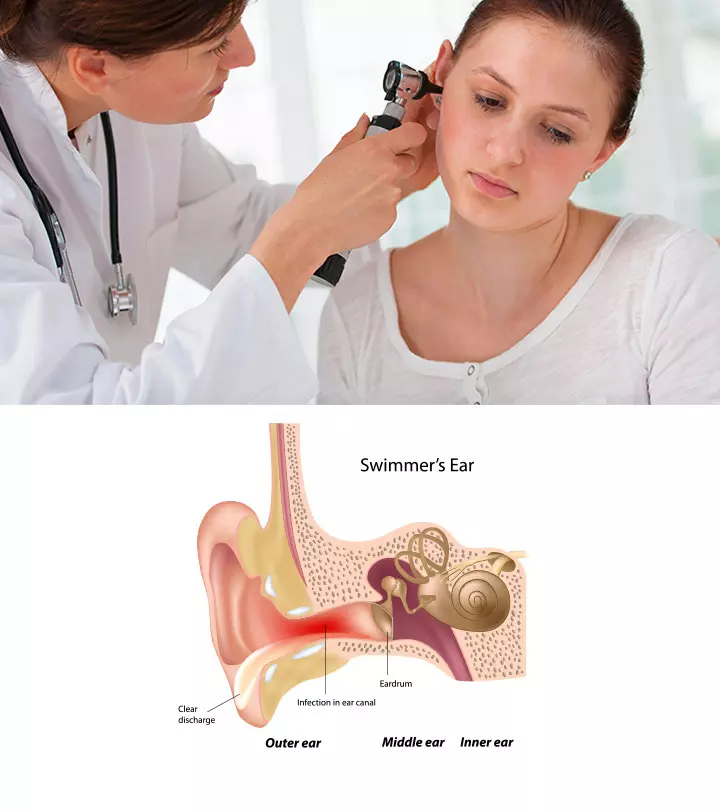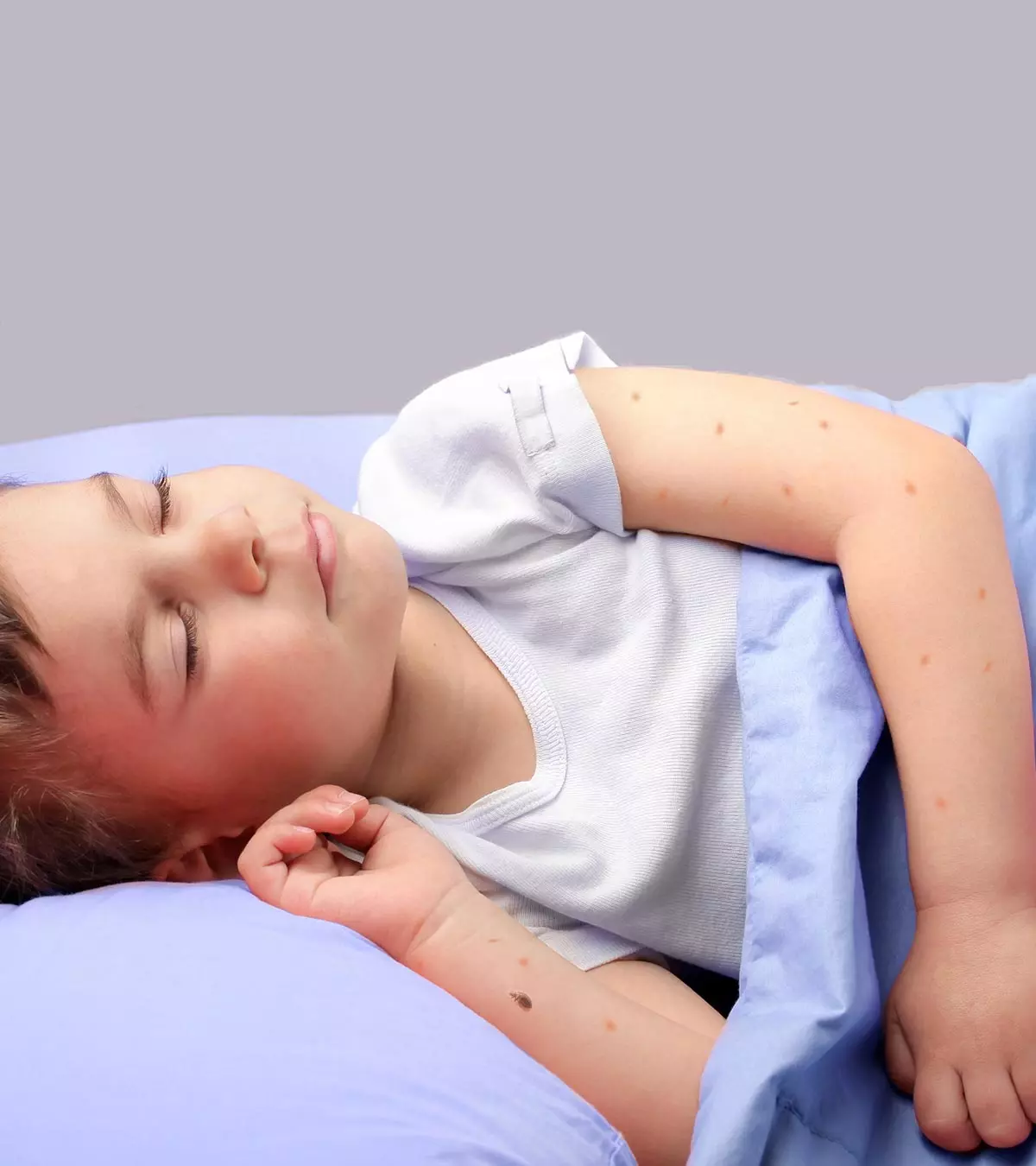
Bed bug bites on kids can be more prominent than on adults due to their sensitive skin. These tiny reddish-brown insects can bite on humans to feed blood, and their bite marks may look reddish, flat, or bumped skin lesions in clusters or a zigzag line (1). Although bed bugs may not cause severe illness in children, sleep disturbances, allergic reactions, and bacterial skin infections in the bite areas could cause irritation and discomfort. Doctors recommended medical treatments for symptoms such as itching and to prevent skin infections (2). However, extermination and pest control services provided by experienced professionals are the only effective solutions to prevent bed bug bites and eliminate infestations from the bed and other home furniture. Read on to know the symptoms, diagnosis, and treatment of bed bug bites on kids and how bed bug infestation is prevented.
Key Pointers
- Bedbugs are small reddish-brown insects that feed on human blood, and while they don’t pose a serious threat to children, they can be irritating.
- Signs and symptoms of bedbug infestation include zig-zag rashes/bites, redness, wheezing, shortness of breath, and difficulty swallowing.
- Human travel is a significant cause of bedbug infestations, and second-hand mattresses and furniture could also be a cause.
- To control bedbug infestations, get professional help, vacuum and clean all surfaces, and seal and discard heavily infested items.
- Bedbugs cause sleep disturbance and itching, which may lead to skin damage or infection. Seek medical help if severe reaction occurs.
- To soothe the affected area, wash it with soap and water and use an anti-itch cream.
What Are The Signs And Symptoms Of Bed Bug Bites On Children?
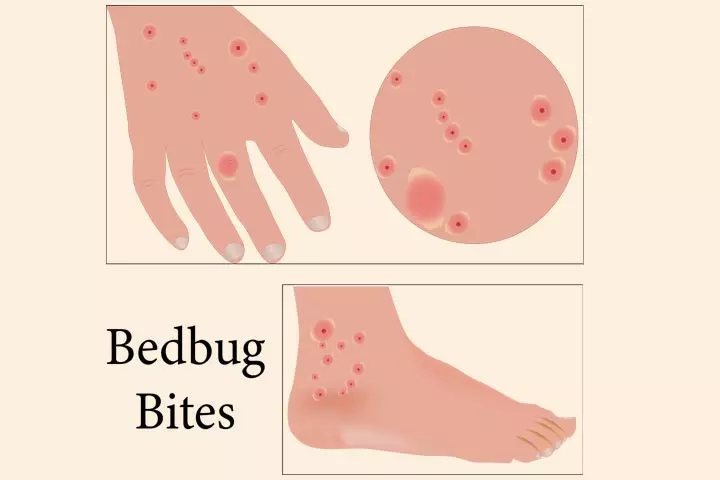
Bed bug bites are often confused with mosquito or flea bites, but they appear different and may take longer to develop. The signs and symptoms of bed bug bites may vary in each child. Some children may not have any symptoms, whereas others may develop life-threatening allergic reactions.
The following may help you to distinguish a bed bug bite from other insect bites (2).
- Red skin rashes due to bug bites
- Bites are usually in clusters, with three to five bites in a cluster
- Bites cause welts that mostly appear in a zig-zag pattern
- Bites are mostly on uncovered areas of the body, such as hands, face, and neck
- Mild to severe itching or allergic reactions could be present
In some cases, severe reactions can occur with (4):
- Shortness of breath
- Wheezing
- Tight chest
- Difficulty swallowing
- Lip or tongue swelling
- Hoarseness
- stridor
Sometimes, children may complain of itching, especially at night, but you may not find any skin rashes since it may take up to 14 days for bite marks to appear in some people (5).
 Quick fact
Quick factAn anonymous blogger and mother of two describes her daughter’s symptoms after a bed bug bite incident. She shares, “A few Sundays ago, our eldest daughter, Vera, started complaining that her back and shoulders were itching. Lo and behold, it looked like a rash. The next day, we took her to the doctor. “Looks like bed bug bites,” she (the doctor) said… The odd thing was none of us had any bites. Vera had no new bites, and her rash was fading fast (i).”
Sources Of Bed Bug Infestation
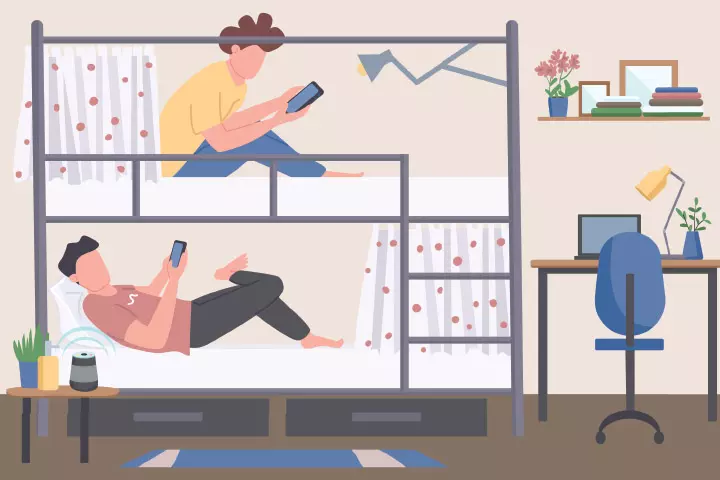
Human travel is the significant cause of bed bug infestation since bed bugs can latch on school or travel bags, shoes, suitcases, boxes, and other items that allow a spot to hide (7). Second-hand mattresses and furniture could also be a source of these pests (8).
Bed bug infestations are common in crowded living areas where more number of people lodge, such as (9):
- Dorm rooms
- Hotels
- Shelters
- Refugee camps
- Trains, buses, and cruise ships
If you visit any of the above places, you may transport bed bugs back to your home on your luggage. After infesting a new place, bed bugs can spread from one item or one room to another. They can hide in mattresses, couches, wallpapers, picture frames, electrical switch plates, baseboards, folded clothes, and even cracks and crevices in the wall. During the initial stages of an infestation, bed bugs typically stay close to the bed. However, as their numbers grow, they begin to spread to other areas, which makes controlling them more challenging (10). The National Pest Management Association conducted a survey to gather important information regarding bed bug infestations. The report states, “The top three places where pest professionals report finding bed bugs are single-family homes (91 percent), apartments/condominiums (89 percent), and hotels/motels (68 percent). Past bed bug statistics have shown these environments to consistently be the top three where bed bugs have been encountered. Bed bugs are also found seemingly everywhere else and in higher numbers, such as nursing homes (59 percent), schools and daycare centers (47 percent), offices (46 percent), college dorms (45 percent), hospitals (36 percent) and public transportation (19 percent) (11).”
Bed bug infestation can occur even in clean-looking environments. The bugs may also survive for a long duration on objects without feed.
 Did you know?
Did you know?Tips To Prevent Bed Bugs At Home

Tackling and controlling bed bug infestation requires professional help from an exterminator experienced in bed bug elimination (5). Pesticides and non-chemical treatments are often used. The bugs can survive for long without food, so periodic bug treatments are required for complete removal.
Bug sprays and certain insecticides help kill bugs. Besides maintaining hygiene and cleanliness, you may also try the following non-chemical methods to tackle bed bugs (13) (14).
- Vacuum cleaning of mattresses, sofa, carpets, etc., could physically remove bugs. You may have to empty the vacuum after each use.
- Wash and dry the clothes and bed covers at high temperatures to kill bugs.
- Steam non-washable clothes and items for five to ten minutes with an electric garment steamer.
- Seal suitcases, bags, or furniture suspected to be infested in a plastic bag for several months.
- Frequent travelers should consider keeping their luggage in a space outside the bedroom, like a garage or a hallway closet.
Wendy Alcala, a vlogger, shares the measures she adopted to prevent another bed bug infestation after dealing with a severe one in her apartment. She says, “Now every time I travel—and this is like set in stone—every time I travel I leave my carry-on in the garage or I leave it out of my room and I wash all the clothes in my carry-on and my luggage. Even if I didn’t wear it, I wash it, and I clean everything thoroughly before I bring it into my room. Also, I take a shower anytime I get back from traveling—nonnegotiable. I take a shower before I go to bed, and then of course I wash my sheets before I leave. But I’m super clean now when it comes to traveling because I’m never dealing with that ever again (ii).” - Ensure mattresses and furniture items are bug-free before purchase. If possible, have them treated with anti-bug treatment before bringing them home.
- You may have to discard heavily infested mattresses, couches, and pieces of furniture to prevent further spread of the bugs.
- Inspect second-hand furniture for bugs before bringing them home.
- Minimize clutter to make inspections easier and reduce hiding spots for bed bugs.
- Seal any cracks, gaps, or holes in bedding, furniture, and other areas where they might hide.
 Things to know
Things to knowRisks And Complications Of Bed Bug Bites On Children
Sleep disturbances due to itching caused by bed bug bites could affect your child’s general well-being. Excessive itching could result in skin damage, followed by secondary bacterial skin infections. However, bed bugs are not known to cause any diseases.
Health risks of bed bug bite may vary in each child and can range from no reactions or mild itching to severe allergic reactions (5).
When To See A Doctor
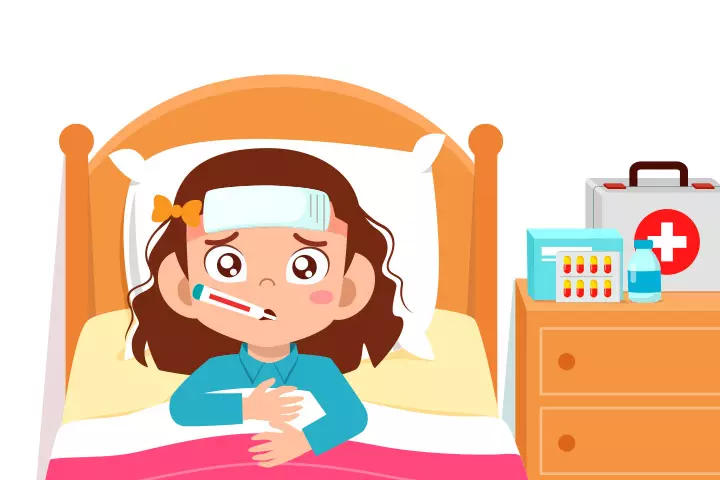
Seek emergency medical care if your kid has a severe allergic reaction after bed bug bites. Symptoms of a severe allergic reaction include breathing difficulty, fever, skin blisters or skin hives, and a general feeling of sickness (16). You may also consult a healthcare provider for a prescription to control intense itching and signs of skin infection.
How Are Bed Bug Bites Diagnosed In Children?
The type of rash and other symptoms could help the pediatrician establish the diagnosis.
You may also look for the presence of bed bugs on the mattress and furniture. There is a higher chance of finding bugs during night hours since they are most active at night. Look for the following indicators to check for bed bugs (5).
- Presence of bed bugs in the folds of the mattress or crevices of the bed.
- Molts or shed exoskeleton that appears pale yellow to yellowish-brown.
- Black, reddish, or rusty spots on furniture or mattresses indicate the blood-filled excrement of the bugs.
- A constant sweet, musty odor in the room due to substances emanated by the bugs.
- The presence of several tiny white specks could indicate bed bug eggs. The eggs are tiny and likely to be visible against a dark background.
A child may experience itching without any rashes. Sharing the above findings with the doctor could be useful for making a diagnosis.
Home Remedies To Treat Bed Bug Bites

The following home remedies can be used to reduce bug bite itching (3).
- Washing the bite area with soap and water may help reduce itching and also prevent skin infection.
- Non-prescription lotions or creams that contain pramoxine or other anti-itch therapies (ex: Neutrogena Skin Aid, Sarna, Aveeno Anti-Itch)
- Applying corticosteroid creams after consulting a doctor may help reduce itching. If your child has severe itching, skin infection, or allergic reactions, you may consult a healthcare provider for stronger corticosteroid medications or antibiotic prescriptions.
If your child has severe itching, skin infection, or allergic reactions, you may consult a healthcare provider for stronger corticosteroid medications or antibiotic prescriptions.
Treatment For Bed Bug Bites On Children
Skin rash due to a bed bug bite may disappear within one or two weeks without any treatment. However, doctors may prescribe hydrocortisone (Cortaid) skin creams or ointments to prevent itching (6).
Oral antihistamines, such as Benadryl (diphenhydramine), are prescribed for children with severe and intense itching. Topical antibiotic creams or oral antibiotics are prescribed if a child has a skin infection or severe skin damage from scratching (17).
These treatments are given to relieve itching and prevent bacterial infection of damaged skin. You may have to take measures to prevent bed bugs at home to avoid future bites.
Symptoms of bed bug bites on kids may vary from no symptoms to severe allergic reactions leading to breathing troubles. Cluster bite marks in a zig-zag pattern are often seen on the skin. Bed bugs are common in crowded living areas, and they may often reach home through travel luggage. They can infest clean-looking areas or furniture and can survive long periods without food. Vacuuming, steam cleaning washable items, and sealing bags, or cloth in plastic covers may help prevent the bug infestation and spreading at home. Professionals such as exterminators can help you remove bed bug infestation from your home.
Infographic: Tips To Prevent Bed Bugs At Home
Bed bugs are tiny insects that feed on the humans’ and animals’ blood. They can often be found in beds, household furniture, and clothing. While it can be challenging to control bed bugs, there are several steps you can take to prevent them from infesting your home. The following infographic provides suggestions, so take a moment to review it. Illustration: Momjunction Design Team
Frequently Asked Questions
1. Do bed bugs stay on my kids’ body?
No. Bed bugs do not stay on human bodies. They stay in dark, hidden spots.
2. Can I feel bed bugs crawling?
You may feel them crawling if you are awake and alert. The sensation is similar to any other insect crawling on you. But you may not realize it when asleep.
3. Will a shower get rid of bed bugs?
Yes, you can eliminate any bed bugs from your body if you shower. Unlike some other insects, bed bugs do not cling to human bodies. They are primarily dormant and emerge from their hidden spots only when you are asleep.
4. Are bed bug bites contagious in children?
No, bedbug bites are not contagious.
5. What could be mistaken for bed bug bites?
Flea, spider, and mosquito bites in children may be mistaken for bed bugs as they are not common. Additionally, people may mistake bed bug bites for skin conditions such as an itchy rash, hives, or chickenpox (13).
Illustration: Bed Bug Bites On Kids Picture Causes Treatment & Remedies
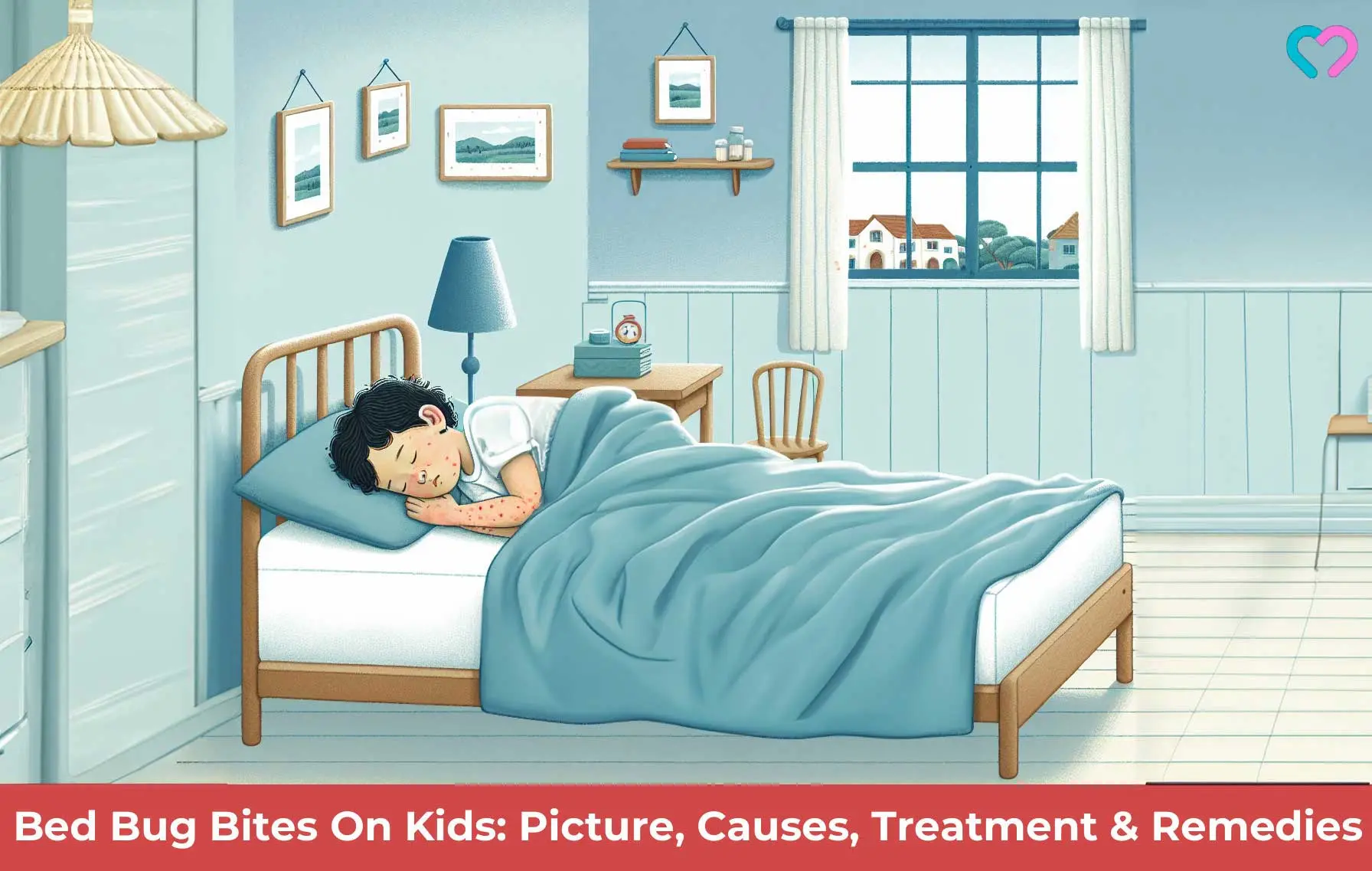
Image: Dall·E/MomJunction Design Team
Bed bugs and their bites can pose quite a challenge. Explore this video to recognize signs of bed bug bites and perform effective checks. Gain insights into identifying and addressing these bites.
Personal Experience: Sources
MomJunction articles include first-hand experiences to provide you with better insights through real-life narratives. Here are the sources of personal accounts referenced in this article.
i. Attack of the imaginary chewdaddies.
https://domaphile.wordpress.com/tag/bedbugs/
ii. STORYTIME: I had bedbugs & what I did to get rid of them for good.
https://www.youtube.com/watch?feature=shared&v=Ta7pyfppC1w
References
- Bed bug bites: How to identify them, get relief, and prevent future bites.
https://www.health.harvard.edu/diseases-and-conditions/bed-bug-bites-how-to-identify-them-get-relief-and-prevent-future-bites - Bedbug Bites.
https://www.ncbi.nlm.nih.gov/books/NBK538128/ - Bedbugs: Diagnosis and treatment.
https://www.aad.org/public/diseases/a-z/bed-bugs-treatment - Bed Bugs and Bed Bug Bites.
https://my.clevelandclinic.org/health/diseases/17847-bedbugs - About Bed Bugs.
https://www.cdc.gov/bed-bugs/about/?CDC_AAref_Val=https://www.cdc.gov/parasites/bedbugs/faqs.html - Bed Bug Bite.
https://www.seattlechildrens.org/conditions/a-z/bed-bug-bite/ - Bed Bugs.
https://www.pestworld.org/pest-guide/bed-bugs/bed-bugs/ - How Do You Get Bed Bugs?
https://www.pestworld.org/news-hub/pest-articles/how-do-you-get-bed-bugs/ - Encountering Bed Bugs While Traveling.
https://www.northeastipm.org/about-us/publications/ipm-insights/encountering-bed-bugs-while-traveling/ - Bed Bugs.
https://entomology.ca.uky.edu/ef636 - Bed Bug Facts & Statistics.
https://www.pestworld.org/all-things-bed-bugs/bed-bug-facts-statistics/ - Bedbugs.
https://www.betterhealth.vic.gov.au/health/conditionsandtreatments/bedbugs - Bed Bugs – What They Are and How to Control Them.
https://www.health.ny.gov/environmental/pests/bedbugs.htm - Pests of Homes, Structures, People, and Pets.
https://ipm.ucanr.edu/PMG/PESTNOTES/pn7454.html - Bedbugs.
https://www.nhs.uk/conditions/bedbugs/ - Anaphylaxis.
https://my.clevelandclinic.org/health/diseases/8619-anaphylaxis - Caring for Patients with Bed Bug Bites.
https://www.cdc.gov/bed-bugs/hcp/clinical-care/?CDC_AAref_Val=https://www.cdc.gov/parasites/bedbugs/health_professionals/index.html
Community Experiences
Join the conversation and become a part of our nurturing community! Share your stories, experiences, and insights to connect with fellow parents.
Read full bio of Dr. Denise Chevonne Parris (Harding)
Read full bio of Dr Bisny T. Joseph
Read full bio of Swati Patwal
Read full bio of Anindita Ghatak









